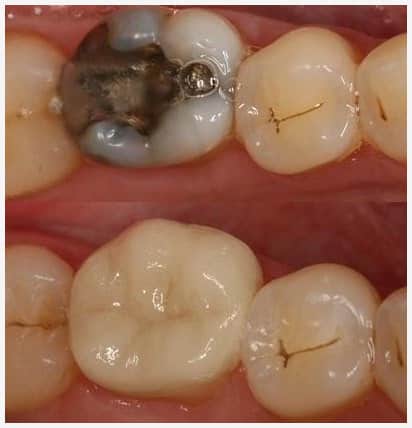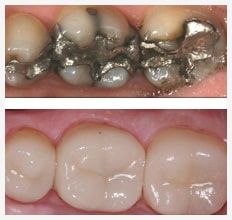SAME-DAY CAD CAM RESTORATION
Modern technology that’s incredibly efficient and easy to use.

Esthetix Dental Spa uses CAD and CAM technology (computer-aided design and computer aided manufacturing) to provide patients with beautiful, life-like porcelain restorations. The restorations are prepared using an Intra-oral scanner that scans the tooth preparation; the restoration is then designed in a computer in-office and then milled using a dental-specific milling machine similar to a 3D printer.
CAD and CAM technology uses metal-free materials to provide patients with milled ceramic crowns, veneers, onlays, inlays and bridges. Dental CAD/CAM is also used to fabricate abutments for dental implants, used to replace missing teeth.
As the available materials and technology for CAD/CAM dentistry have improved over the years, so too have the restorations that patients can receive from this form of digital dentistry. Today’s CAD/CAM restorations are better-fitting, more durable and more natural looking (multi-colored and translucent, similar to natural teeth) than previously machined restorations.
Benefits of CAD & CAM Technology
Research suggests that today’s milled CAD/CAM restorations are stronger than those milled from earlier materials. They are also less likely to fracture.
One of the advantages of CAD/CAM technology is that if your dentist has the technology in his or her office, same day dentistry may be a treatment option for you. CAD/CAM dental technologies such as the E4D Dentist System can be used to make an inlay, onlay, and crown or veneer restoration in a single appointment, while you wait.

If your dentist offers in-office CAD/CAM, you do not require traditional impressions, a temporary restoration or a second appointment. You will only receive a local anesthetic (to be numbed) one time for any necessary tooth preparations. An exception to this process is the all-ceramic bridge since it is created in a laboratory using the CAD/CAM technology.
All-ceramic bridge restorations require a second office visit to insert the bridge. In such cases, a temporary restoration would be necessary. Another exception is if your dentist prefers to fabricate the CAD/CAM restoration while you are not in the office, making it a two-appointment process.
Some dentists prefer this approach in order to dedicate more time to the design and characterization processes involved with creating a CAD/CAM restoration. A temporary also would be required in this instance.
